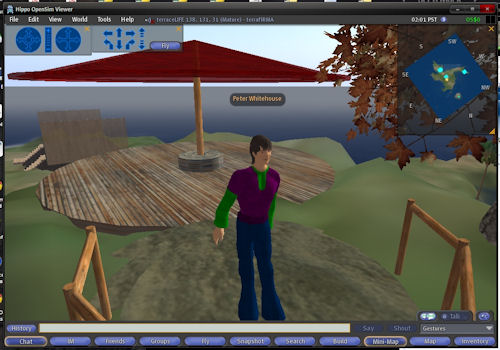Second Life (SL) is a virtual world developed by Linden Lab that launched on June 23, 2003 and is accessible via the Internet. A free client program called the Second Life Viewer enables its users, called Residents, to interact with each other through avatars. Residents can explore, meet other residents, socialize, participate in individual and group activities, and create and trade virtual property and services with one another, or travel throughout the world (which residents refer to as “the grid”). Second Life is for people aged 18 and over, while Teen Second Life is for people aged 13 to 17.
Built into the software is a three-dimensional modeling tool based around simple geometric shapes that allows a resident to build virtual objects. This can be used in combination with the Linden Scripting Language which can be used to add functionality to objects. More complex three-dimensional sculpted prims (colloquially known as sculpties), textures for clothing or other objects, and animations and gestures can be created using external software. The Second Life Terms of Service ensure that users retain copyright for any content they create, and the server and client provide simple digital rights management functions.
OpenSimulator, often referred to as OpenSim, is an open source server platform for hosting virtual worlds. While it is most recognized for compatibility with the Second Life client, it is also capable of hosting alternative worlds with differing feature sets with multiple protocols. OpenSimulator is designed to be easily expanded through the use of plugin modules and several modified distributions exist, such as realXtend, additional plugins can be found on the OpenSimulator Forge. Multiple servers can be integrated into a ‘grid’ which allows larger more complex areas to be simulated.

